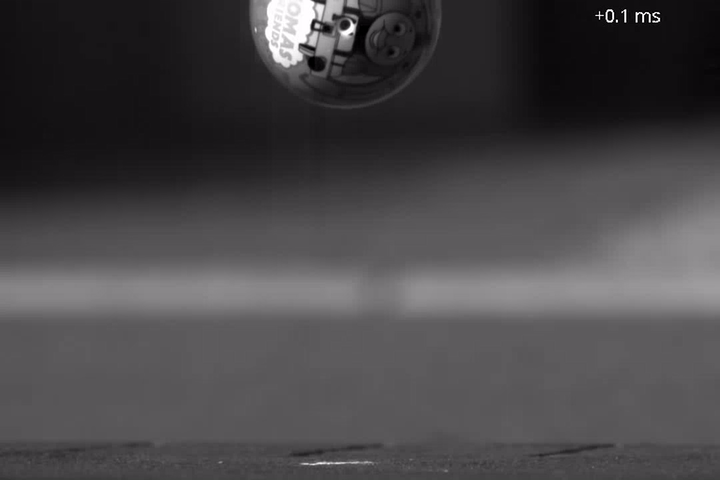25 The Normal Force
We continue our exploration of the forces that affect our every day life with the normal force.
Exercise 25.1: Normal Force (Part I)
Consider a book resting on a table.
The force of the book pushing up on the book is called the Normal force. The word “normal” here refers to the fact that the force is perpendicular to the surface of the table. If I had my way, we would refer to this force as the touching force. This is because of the “rule of touching:”
Any two objects that “touch” exert a repulsive force on each other.
In fact, I would argue that touching is defined by the existence of the normal force. Suppose you wanted to touch the wall with your finger. You close your eyes, and slowly move your finger towards the wall. You know you touched the wall when you feel a slight pressure on your finger. That is, “touching” and “feeling the normal force” mean the same thing.
Optional: Can you really touch anything?
If you live in the internet, you may have run into the argument that “you can’t touch anything.” For instance, here is a tiny blurb from this video from the youtube channel Vsauce.
This confusion arises because people try to equate “touching” with “there is no space between objects.” It is certainly the case that in our everyday life, when we touch an object, it looks like there is no space between it and our fingers. However, touch is defined by our sense of well, touch (i.e. feeling the pressure in our skin due to the normal force), rather by our sight.
Okay- but, is there a gap between touching objects?
Answering this question in a way that is fully satisfactory requires a knowledge of quantum mechanics, but the basic issue is this: at the atomic level, objects simply don’t have nice clean boundaries, so the question doesn’t quite make sense. In the end, the only thing that makes sense is to define touching in terms of a repulsive force.
Let’s go about drawing a force diagram involving the normal force
Exercise 25.2: Normal Force (Part II)
Draw a force diagram for a book sitting on a table. Remember forces must be drawn at the point at which they are being applied! You can scroll the picture below to see my solution.
Two things to highlight:
![]() The forces on the book are drawn at the point at which they act: gravity is pulling the book down from the middle, while the table pushes the book upwards where the two touch each other.
The forces on the book are drawn at the point at which they act: gravity is pulling the book down from the middle, while the table pushes the book upwards where the two touch each other.
![]() The two vectors (
The two vectors (![]() and
and ![]() ) are roughly the same size.
) are roughly the same size.
The last point is important: the book doesn’t accelerate, so ![]() . Thus, the vectors must have the same length. If we drew
. Thus, the vectors must have the same length. If we drew ![]() bigger, we would be stating the book accelerates down, which is clearly wrong.
bigger, we would be stating the book accelerates down, which is clearly wrong.
A comment on notation: in the problem above, ![]() points up, and
points up, and ![]() points down, so indeed,
points down, so indeed, ![]() . However, if I use the standard convention that up is positive and down is negative, I could have also written
. However, if I use the standard convention that up is positive and down is negative, I could have also written ![]() . Notice the lack of arrows in this statement; this equation is about the magnitudes of
. Notice the lack of arrows in this statement; this equation is about the magnitudes of ![]() and
and ![]() .
.
Bottom line: both versions of the equation are correct.
Exercise 25.3: Normal force (Part III)
 You bounce a rubber ball on the floor.
You bounce a rubber ball on the floor.
During the bounce, is the normal force bigger, smaller, or equal to the weight of the ball? Justify your answer in English.
Based on your answer draw a qualitatively correct force diagram for the forces acting on the ball during the bounce. Move the slider to reveal my solution.
To summarize, if you bring two objects in contact with each other, a “normal force” is established that pushes the two objects away from each other. But why?
For our purposes, we will simply asserts that this is true: it is a law of physics. As it turns out, there is a more fundamental understanding of why this repulsive force arises. However, the explanation is inherently quantum-mechanical, so it is far beyond the scope of this book.
Key Takeaways
